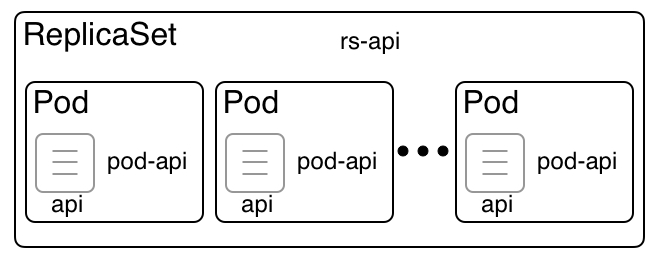A single pod in an environment with high availability requirements is insufficient. What if the pod crashes? What if we need to update the application running inside the pod but cannot afford any service interruption? These questions and more can only indicate that pods alone are not enough and we need a higher-level concept that can manage multiple instances of the same pod. In Kubernetes, the ReplicaSet is used to define and manage such a collection of identical pods that are running on different cluster nodes. Among other things, a ReplicaSet defines which container images are used by the containers running inside a pod and how many instances of the pod will run in the cluster. These properties and the many others are called the desired state.
The ReplicaSet is responsible for reconciling the desired state at all times, if the actual state ever deviates from it. Here is a Kubernetes ReplicaSet:

In the preceding diagram, we see such a ReplicaSet called rs-api, which governs a number of pods. The pods are called pod-api. The ReplicaSet is responsible for making sure that at any given time there are always the desired number of pods running. If one of the pods crashes for whatever reason, the ReplicaSet schedules a new pod on a node with free resources instead. If there are more pods than the desired number, then the ReplicaSet kills the superfluous pods. We can thus say that the ReplicaSet guarantees a self-healing and scalable set of pods. There is no limit on how many pods a ReplicaSet can be comprised of.